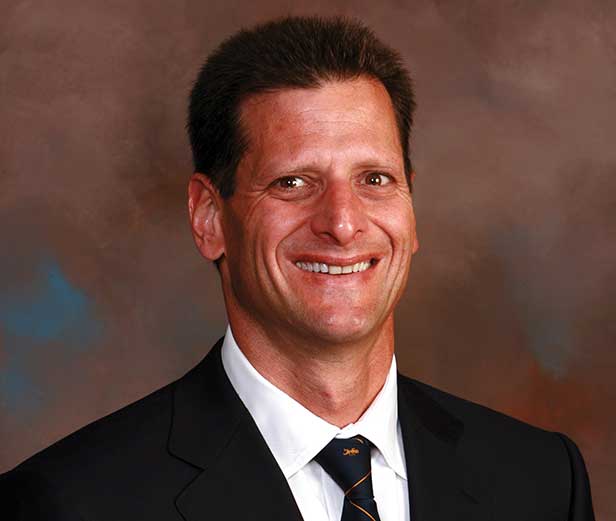The promo world, like just about every industry affected by international trade, has had a tumultuous week.
President Donald Trump announced 25% tariffs on Canadian and Mexican imports at the beginning of February, only to put a one-month pause on the plan a few days later following meetings with Canadian Prime Minister Justin Trudeau and Mexican President Claudia Sheinbaum. Amid all of that, new tariffs were put in place on Chinese imports and more, stricter international tariffs were threatened.
So, where does that leave American trade relations now?
- Trump has placed an additional 10% tariff on imports coming from China, which quickly led to Beijing announcing retaliatory tariffs.
- He has also announced an end to the “de minimis” exemption that has allowed packages worth less than $800 to enter the U.S. without having to pay a tariff or duty.
- The threatened 25% tariffs on Canadian and Mexican imports have been halted until March without a clearly defined criteria for what must be accomplished in that time.
Needless to say, many promo firms have been preparing, reacting, adjusting and generally wrapping their collective heads around what these possibilities might mean for their businesses and the promotional products industry at large. One Canadian supplier told PPAI Media that he had spent “20 hours a day” leading up to the pause on Canadian tariffs with business groups discussing short- and long-term implications, preparations and contingency plans.
As the week has progressed, PPAI Media has been in contact with various promo leaders to pick their brains on the current state of tariffs and their impact on the branded merchandise landscape, as well as how they are approaching the near-term future.
‘Innovative Solutions’
Jim Stutz, executive vice president of sales, marketing and business development at HALO, PPAI 100’s No. 2 distributor, has been guiding the company’s account executives, sales teams and clients through tariff possibilities and realities over the past few weeks and months.
“Distributors across the industry should be exploring alternative sourcing options proactively,” Stutz says. “This strategic approach helps mitigate potential cost increases and maintains client satisfaction, turning pricing challenges into opportunities for strengthening relationships.

Jim Stutz
EVP of Sales, Marketing and Business Development, HALO
“The promotional products industry will seek out innovative solutions to lessen the impact of tariff changes. By embracing a range of tactics including boosting inventory levels and diversifying manufacturing sources beyond traditional markets, the industry will sustain operations during this global supply chain shift.”
Stutz elaborated that the industry’s strong supplier and distributer networks will be “critical in navigating these changes.”
PCNA, PPAI 100’s No. 3 supplier, is working on navigating the unknown complexities of future tariffs by continuing to maintain deep inventory for its top selling items, according to Liz Haesler, chief merchandising officer at PCNA.
“The potential for tariff increases underscores the need for a flexible and proactive supply chain strategy,” Haesler says. “It’s important for suppliers in this industry to continue to focus on diversifying sourcing, optimizing inventory management and strengthening supplier partnerships to minimize disruption and adapt to evolving trade policies. By staying as agile as possible and by focusing on long-term strategies, suppliers can continue to provide value to their customers, even in the face of economic shifts.”

Liz Haesler
Chief Merchandising Officer, PCNA
iPROMOTEu, PPAI 100’s No. 11 distributor, is keeping its affiliate network up to date on developments and the best course of action. The Wayland, Massachusetts-based firm is urging affiliates to review open orders, update pricing policies, educate customers and be ready for further changes.
“We’re monitoring developments and gathering insights from multiple sources, including our vendor community,” said Joe Hoffman, senior vice president of operations at iPROMOTEu, adding that price increases will vary based on each supplier’s business model.
“Some suppliers may raise prices immediately, while others may absorb costs temporarily. Many U.S.-based suppliers have stocked up on inventory in anticipation of these tariffs. Price increases may not take effect until this pre-tariff inventory is depleted.”
When Trump implemented tariffs during his first term, the hard goods side of the industry was more drastically impacted than the apparel side due to a higher reliance on China, says Jose Gomez, CEO and president of Edwards Garment, PPAI 100’s No. 19 supplier.

Jose Gomez
CEO & President, Edwards Garment
“Other effects that more tariffs can have are acceleration on manufacturing automation (both in current countries of origin and in the U.S.) and shifts on the promo spend by product category (if one category’s prices go up and others don’t),” Gomez says. “Although domestic production could increase, this is likely marginal in scale. The volume of promo product imported is massive and creating new production capacity takes significant investment and time to install factories, hire and train a workforce and more.”
Gomez also explained that Edwards has spent the past decade-plus diversifying its product sources, including near-shoring options, which will help it navigate current and potential tariffs. It’s currently evaluating changes it can and may need to make to minimize customer impact.
Looking For a Silver Lining
BAMKO, PPAI 100’s No. 6 distributor, has been preparing for potential tariff disruptions since 2018. As a result, the 10% increase on Chinese imports wasn’t a surprise; the Los Angeles-based firm already factored it into its plans, according to Eli Schneider, senior director of operations at BAMKO.
“China is still a big part of our supply chain, but we’ve been actively diversifying and building relationships with suppliers in other countries spanning North, Central and South America, as well as Asia,” Schneider says. “This gives us more flexibility and backup options. Nobody likes market ups and downs, but fortunately, BAMKO is built to handle them. These latest tariff announcements don’t change our long-term sourcing strategy. We’re ready to navigate whatever comes our way.”
While tariffs do equate to price increases for consumers, now that businesses have more definitive direction on the scale of the increase, they can at least plan accordingly, says Kevin Walsh, president of Showdown Displays, PPAI 100’s No. 8 supplier.

Kevin Walsh
President, Showdown Displays
“I foresee those business models that leverage China as their production facility being impacted the hardest as 100% of their orders will be subject to this tariff, which is amplified if they’ve also been leveraging de minimis shipments,” Walsh says.
“These new tariffs, and the elimination of the de minimis exemption, represent significant cost increases (+18%) for those models. Other domestic manufacturers, like Showdown Displays, will experience the impact of an increase, but only as it relates to the imported components that comprise that item rather than the entire finished product. I’d estimate this to be in the range of 3-5% depending on the product.”
Craig Nadel, CEO of Nadel, PPAI 100’s No. 9 distributor, adds that while no industry wants to see an increases of taxes on the products or services they provide, “10% shouldn’t be terrible.”
“Now, 25% is a lot. If that happens, I’m sure our costs will increase,” Nadel says. “Of course, everyone in the industry will have the same issues so in that regard we won’t be worse off. It will increase our sales even if things are more expensive. However, I think we’ll all lose some business on the margin to gift cards, bottles of wine, etc. I hope they don’t happen.”

Craig Nadel
CEO, Nadel
“I don’t think it’s a be-all end-all, ‘end of the world’ type of thing,” Nadel says, “but it would be a headwind for the industry.”
Concerning the additional tariffs placed on China, HPG, PPAI 100’s No. 6 supplier, will continue to take the “long view” in regard to their impact, says HPG CEO Chris Anderson.
“This includes, but is not limited to, shifting production and distribution among our existing North American facilities, adjustments to our global upstream supply chain and proactively seeking, and investing in, efficiency-driving opportunities within our entire ecosystem. Furthermore, the implementation of tariffs is often accompanied by shifts in currency valuations, which can have a partially mitigating impact on the real cost of tariffs.

Chris Anderson
CEO, HPG
“Prior to considering any possible tariff-driven increase to the selling price of our products, HPG will first exhaust any-and-all opportunities to offset the impact of tariffs. Only after all such mitigating strategies have been exhausted, will HPG break out the net impact of tariffs, and provide a transparent view of their impact on pricing.”
Regarding potential Canadian and Mexican tariffs, Anderson said that the company’s manufacturing expansion into Mexico and Canada has bolstered its preparation to withstand such North American tariffs and that Canadian distributors can “take comfort” that HPG’s Debco and BCG presence (located in Toronto and Montreal, respectively) will be able to take their orders regardless of whether the pauses on tariffs end.
Tension in Canada
There’s no comfort to be found by distributors north of the border.
“My biggest concern is for the Canadian economy and Canadian manufacturing in general, and what that means for our clients,” says Aaron Moscoe, CEO of Toronto-based TPS Promotions & Incentives.
“If you think about the impact on the [Canadian] automotive industry, it’d be massive if there isn’t an exemption. Most automotive manufacturing in Canada would be expected to shut down within two weeks. You’re talking about potentially massive layoffs and then potentially inventory problems as well. If you are in the automotive industry or another severely affected industry, are you going to put your spend on hold?”

Aaron Moscoe
CEO, TPS Promotions & Incentives
“But for Canadian manufacturers who primarily supply goods in Canada to distributors in Canada,” Moscoe adds, “this could be a boon for them.”
Jen Beldam, founder and president of Ontario-based Northern Branding Studio, plans to take this month-long pause to educate clients and examining her firm’s supply chain.
“As a small firm, we’re rarely working on projects large enough to be offshored, so we need to look at what suppliers are funneling products through their warehouses in the U.S. versus who actually have warehouses in Canada,” Beldam says. “Whether the tariffs end up being canceled or not, these discussions are alerting everyone across the continent to the fact that our previously strong relationship with our neighbors could change on a daily basis. Nothing is secure.”

Jen Beldam
Founder & President, Northern Branding Studio
Beldam added that her team is also hyper conscious about having clients on both sides of the border, so they’re looking at ways to essentially limit border crossing for merchandise so that their American clients aren’t deterred from working with a Canadian firm.
“We’re just going to try and minimize friction on the international fulfillment side,” she said. “It’s definitely hard to plan for the future when substantial tariffs are being threatened, and then imposed, and then walked back and then delayed. It’s a bit exhausting to be honest.”
Canadian suppliers with clients in the U.S. are in a similar position.
“Running a business without certainty isn’t reassuring for suppliers and customers with the back and forth on tariffs,” says Asif Bandeali, co-CEO of Fairdeal Import & Export in Ontario. “At this point, we’ll be status quo, but ready to act in 30 days if needed.”

Asif Bandeali
Co-CEO, Fairdeal Import & Export
Bandeali says the initial plan before the pause was to not increase pricing and see how things play out in the coming weeks and months. “In our case, we’d hope to increase sales to help offset the additional cost of tariffs,” he says. “We’d consider implementing that plan if the tariffs return in 30 days.”
Prepared For Anything
Anthony St. Peter, president of Stellar Lanyards, which is headquartered in Mexico City, says the supplier is well-positioned to mitigate the impact of any proposed tariffs.
“Stellar Lanyards operates differently from many suppliers in that we manufacture our products from raw materials and handle our own imports into the U.S. as a bonded importer,” says St. Peter, a 2024 PPAI Rising Star. “For our most popular products, the cost increase would be under $0.06 each, which allows us to remain competitive with overseas suppliers while still offering the same delivery speed as domestic competitors.

Anthony St. Peter
President, Stellar Lanyards
“With President Trump’s additional 10% tariffs on China and the elimination of the de minimis exemption, we’re in a strong strategic position. We anticipate a growth in business this year as a result, with or without the tariffs happening.”
Scott Edidin, co-founder of California-based supplier 6AM Sourcing, which specializes in sourcing branded merch from Mexico, has already seen the impact that the pressure of additional tariffs has had.
In fact, for open orders in China, Edidin says the firm is absorbing all additional tariff fees for in-house orders and has already notified clients. “We have also been working closely with our partners to anticipate any additional implications transparently,” he adds.

Scott Edidin
Co-founder, 6AM Sourcing
“Our priority is to maintain open communication with our clients and support them through these adjustments as they continue to change. While the industry will experience price increases, impacting budgets and end-user spending, we anticipate a period of adjustment before the market stabilizes, much like previous tariff changes.”


